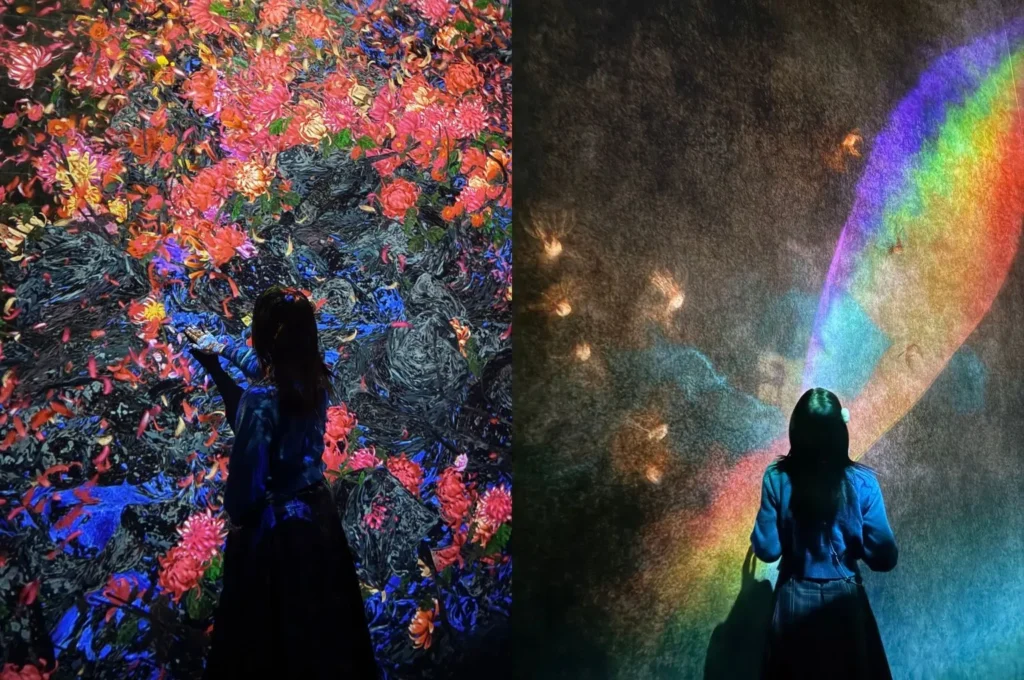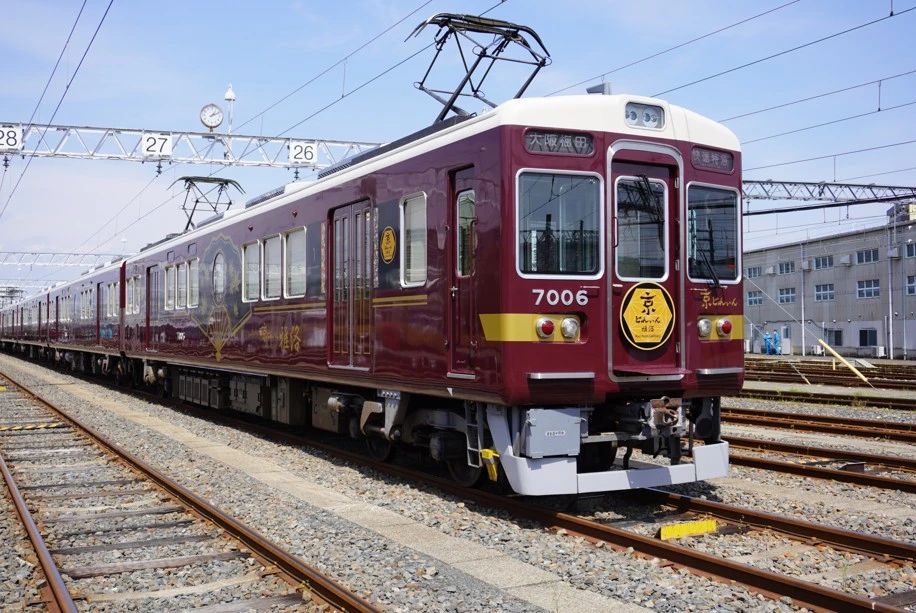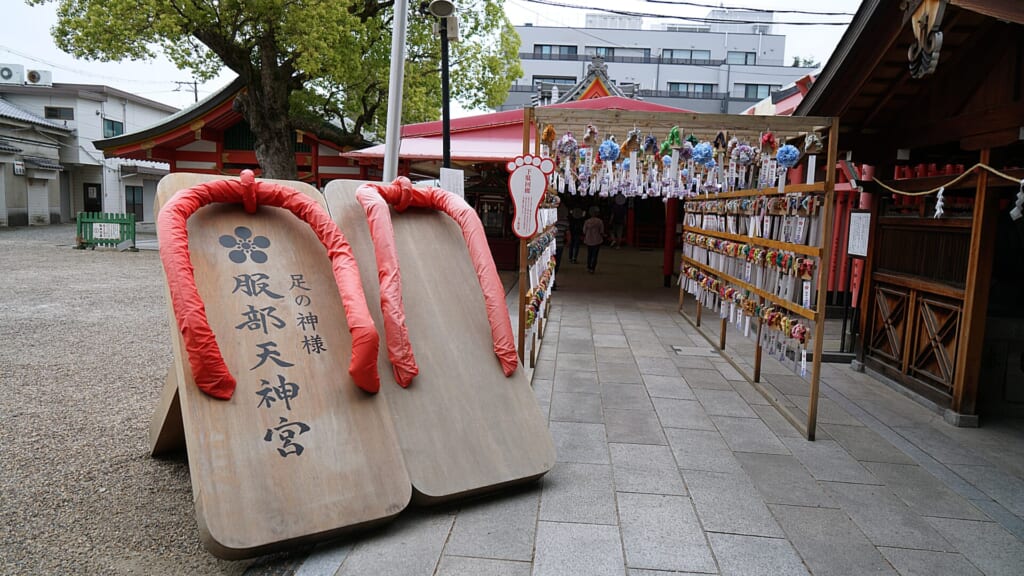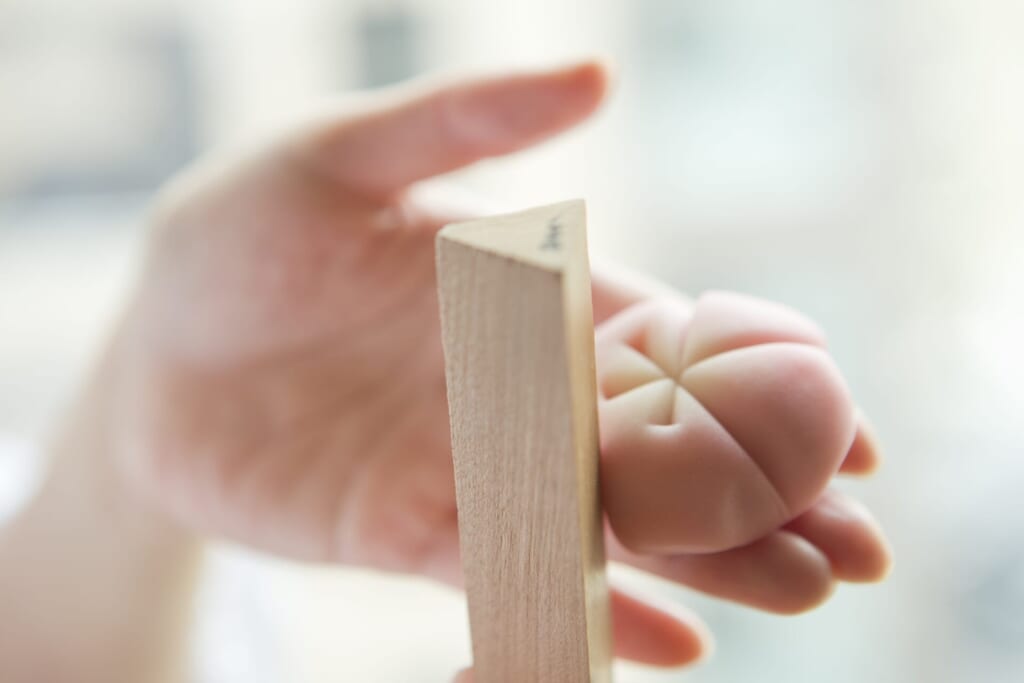京都
造訪京都能體驗最道地的「日式精神」。不妨身著傳統和服,探索這座城市的古老寺廟與神社,品嚐精緻的日式料理。
相關文章
-

去關西的神社寺院過日本新年的「初詣」吧!
"Hatsumode" 是指一年中第一次參拜神社或寺廟,目的是為了感謝過去一年的努力,並祈求來年的好運氣。每個神社或寺廟都會提供各自的祝福。本文將按祝福語分類,介紹大阪、京都、神戶和奈良的熱門新年參拜地點。此外,本文還介紹了方便您參拜的火車票資訊。快來體驗這個獨特的日本傳統吧! -INDEX-阪急阪神新年車票【OSAKA/贏得好運勝尾寺【KYOTO/消除疾病 】 【KYOTO/慶祝活動八坂神社KYOTO/婚姻】下鴨神社 【KYOTO/美神】川合神社 【KOBE/良緣】生田神社 【西宮/生意興隆】神社西宮神社 【西宮/辟邪】夢堂藥師兜率寺 【寶塚/祈求平安出生】中山寺 【NARA/治病】藥師寺 「阪急阪神新年乘車券 」提供一日無限次的乘車優惠,最適合您新年參拜神社。這是一種特別的新年車票,可在一天內不限次數搭乘阪急電車、阪神Railway 和 Kobe Kosoku Railway 的所有路線(包含紀念禮券)。 使用條件:・1,200 日元可在一天內不限次數搭乘阪急和阪神的所有路線!・ 在參與活動的神社和寺廟兌換電子禮券,即可獲贈紀念禮品。・1 月 1 日至 11 日有效 使用方法請參閱本頁(Slutto QRtto 常見問題)。 銷售期間:2025年12月20日(星期六)~2026年1月11日(星期日) 有效期限:2026 年 1 月 1 日(星期四,假日)~ 2026 年 1 月 11 日(星期日) 售價:[基本版] 1,200日圓(僅限成人) [鼻子版] 1,600日圓(僅限成人) 銷售地點:您可以在 Surutto QRtto 網頁上購買。Daruma 因為摔倒後會爬起來,所以是很受歡迎的吉祥物。勝王寺是著名的吉祥寺,寺內各處都擺放著 Daruma 塑像。使用 Daruma 占卜您在考試、愛情和運動等各方面的運勢。該神社自 794 年之前就已存在,被稱為 「祇園山」。八坂神社以及日本各地供奉須佐能乎的其他神社的總部。除了被指定為國寶的神社本殿之外,轄區內還供奉了許多其他神祇,其中包括專門驅除瘟疫和邪惡的瘟疫神社。下加茂神社是著名的戀結勝地。在這裡,您可以畫一個和服形狀的命盤,稱為「Enmimusubi-mikuji」。您將獲得以《源氏物語》中的和歌詩為基礎的戀愛指導。華麗的千利門布料的「緋間守」也很華麗。如果您想變美,就去河合神社吧!這是下鴨神社(Shimogamo Shrine)裡面的一個小神社,裡面供奉著保護女性之神。河合神社提供祈求美麗的特殊繪馬(供奉圖片的牌位)。用您平常使用的化妝品,在ema上化上美麗的妝容,然後許願。您一定會變得更美,不僅是外表,還有內在。生田神社位於神戶市區中央。紅色而神聖的主神龕非常奇妙,莊嚴的氣氛會洗滌您的身心。正殿後面是生田森林,您可以在此進行「水卜姻缘」。此外,生田神社的ema(供奉牌位)是非常可愛的心形。祈禱能有個好姻緣!西宮生田神社是日本所有惠比壽神社的總部,供奉福神惠比壽大人,在當地被稱為 「西宮的惠比壽」。 它是著名的生意興隆之神。只有在新年期間才會舉行的 「太鼓舞 」非常受歡迎。在漫長的人生中,會有關鍵時刻的里程碑,也會因各種生理和社會變化而出現中斷。為了迎接這個里程碑,老一輩的人就想出了 「衰年 」的傳統。Yakujin Myoo 據說可以驅除各種邪惡。Mondo Yakujin Tokoji Temple 是日本三座 Yakujin Myoo 之一。讓我們一起祈求好運,驅除厄運,讓我們在新的一年平平安安。中山寺是日本第一座觀音聖地,由聖德太子創建。許多來自日本各地的孕婦都會參拜這座被稱為 「安全分娩之寺 」的寺院。中山宮設有扶手電梯,讓孕婦不必爬上石階。這是只有專門祈求平安分娩的寺廟才會有的善意舉動。不要錯過 2017 年重建的五層塔,這是約 400 年來首次重建。深藍色令人印象深刻。藥師寺是世界遺產,於 680 年由天武天皇為祈求醫好皇后的病而建造。寺院的主神藥師寺如來是藥師佛。他能消除人們的疾病和不幸,賜予人們健康和幸福。據說不僅能消除身體上的疾病,還能消除人們埋怨的心,因此具有加持力。讓我們去參拜古代奈良的寺廟,從中得到力量。希望您在新的一年有個好心情。
-

teamLab Biovortex 京都指南:門票、評論和必看亮點
準備好體驗數位藝術的全新進化吧! teamLab Biovortex 京都展廳已正式開幕,成為全球知名的藝術團體 teamLab 在日本舉辦的規模最大的展覽。如果您正在計劃前往關西地區,那麼 teamLab 在京都的這場全新展覽絕對不容錯過。無論您是想尋找最適合拍照打卡的藝術作品,還是計劃一次輕鬆便捷的參觀之旅,本文都將為您涵蓋 teamLab 京都展廳的門票信息、開放時間以及必看藝術作品等所有信息。 -目錄- 1. 京都teamLab Biovortex為何不容錯過 2. 京都teamLab Biovortex的地點、開放時間和門票信息 – 地點和交通 – 開放日期和時間 – 門票和在線預訂 3. 進入京都teamLab Biovortex前的提示 4. 逐層點評:京都的空境雕塑與繪畫層:全身心感受藝術 – C. 巨石層:高聳的光影雕塑 – D. 運動森林與未來公園:趣味互動 5. 在禮品店Sketch Factory客製化您的專屬藝術品 6. 京都 vs. 大阪:與大阪teamLab植物園的比較 京都teamLab BiovortexteamLab Biovortex0201070120027年的大型展覽。其獨特的「生物漩渦」概念探索了生命的相互關聯,在這裡,您的存在和他人的行為會持續影響並塑造不斷變化的數位藝術。以下內容總結了參觀 teamLab Biovortex Kyoto 前的所有重要信息,包括交通方式、閉館日期和購票方式。 teamLab Kyoto 交通便利,是京都行程的理想選擇。如果您搭乘火車,最近的車站是 JR 京都站。請從八條口(南口)出站,步行 7 分鐘即可輕鬆抵達。強烈建議您提前在線預訂以確保入場,因為門票經常售罄,尤其是在週末和假日。如果線上門票已售罄,現場也無法購買。門票類型及優惠 門票分為兩種:入場券及彈性通票。您可以在官方網站或 Klook 上購買。下表對比了兩種票券類型。門票類型 主要差異 價格 折扣 入場券 需選擇特定的入場時間及日期18歲及以上:3,600日圓起;13-17歲:2,800日圓;4-12歲:1,800日圓;3歲及以下:免費。殘障人士可購買彈性通行證。只需選擇參觀日期,即可在參觀當日的開放時間內隨時入場。 12,000日元。無。除單程票外,如果您還需要JR Haruka往返關西國際機場的單程車票,我們提供組合票。 ▶JR Haruka組合票詳情。在前往teamLab京都之前,請先查看以下提示,以確保您的參觀順利且照片完美。建議參觀時間長度:如果您想充分欣賞50多件作品並拍攝那些一生難忘的照片,建議至少參觀2.5至3小時。服裝和鞋子:穿著單色服裝,尤其是白色或淺色。藝術裝置的燈光映照在這些色彩上,讓你光彩照人,確保你在每張照片中都格外引人注目。平底閉趾鞋是必備的!出於安全考慮,高跟鞋、涼鞋或其他不穩定的鞋子禁止進入運動區。如果您忘記攜帶,運動區入口處提供運動鞋租借服務。收納和規則:我們提供免費的置物櫃,可存放小型包款/背包。室內禁止攜帶食物和飲料,因此您也可以將它們放入儲物櫃中。嬰兒車禁止入內,您可以使用旁邊的鍊式儲物櫃。請注意,大型行李箱的鍊式儲物櫃數量有限。準備好您的相機吧!以下是teamLab京都一些最令人著迷、最適合拍照的藝術作品:在地下層,您將看到一些全新的、前所未見的「生物渦旋」概念奇觀。 teamLab之旅正式開始後,您首先進入的空間是一個盛開和凋零的花朵房間。當人們觸摸花朵時,它們會散落一地;當你駐足凝望時,身邊的花朵會更加繁盛地綻放。在這裡,你可以真切地感受到時間、空間和生命的流動。當你停在牆前,被鮮花環繞時,只需輕輕觸碰,它們便會如魔法般飄散開來。 「共鳴燈森林」由無數盞燈組成。當有人駐足附近時,最近的一盞燈會發出明亮的光芒,光芒會持續傳遞到下一盞燈。燈光還會變換顏色,敬請期待一場完美的燈光秀!上到二樓,最引人注目的是日本首展的「無形雕塑」。這件藝術品如同漂浮在空中的肥皂泡,宛如雲朵。為了保護你的眼睛和衣物,這裡提供雨衣、鞋套和護目鏡租賃服務。隔壁的「瞬息抽像生命與回歸」展區,你需要換上提供的靴子,踏入一片液態空間。腳下的液體會隨著你的每一步而扭曲變形,每一幀畫面都呈現出不同的、獨一無二的抽象藝術作品——令人嘆為觀止。繼續往上,您將抵達巨石層。踏入其中的那一刻,彷彿置身於另一個星球。就連這裡的植物都栩栩如生,偶爾會被澆灌。 「共鳴微觀世界-凝固之光」會循環變換32種不同的顏色。輕輕推動這些光球,它們就會像翻滾的陀螺一樣來回搖擺。不妨靠近這些色彩繽紛的光球,擺個姿勢,拍出精彩的照片。最後一處是遊樂場,大人和小孩都能在這裡盡情玩耍。這裡有各種各樣的“迷你遊戲”,旨在讓您動起來,並全心投入。但請注意:如果您穿著高跟鞋或涼鞋,請務必在進入此區域前換上運動鞋! 「空中攀爬」穿梭於一群彩色鳥兒之間,是拍攝動感照片、展現藝術作品多維特性的絕佳方式。在毗鄰的未來公園裡,有一片巨大的「海洋」。記得拿起蠟筆,畫出屬於自己的海洋生物!工作人員掃描您的畫作後,您很快就能在巨型螢幕上看到您獨一無二的作品在水中游動。 Sketch Factory 是藝術與紀念品的完美結合!在數位世界中(來自 Graffiti Nature 或 Sketch Ocean)欣賞您的作品栩栩如生之後,您可以將它們帶回家。客製化紀念品:您可以將自己的畫作印在 T 卹、手提袋或冰箱貼上,作為 teamLab 京都之旅的完美個人化紀念品!如果您正在關西旅行,您可能會好奇另一個熱門景點:大阪的長井植物園。場地/氛圍 真實評價 teamLab Biovortex 京都 規模宏大,室內,高科技,概念性強,且內容豐富。新手首選!它擁有種類繁多的裝置藝術,是一項大型的日夜活動,提供各種各樣的拍照背景。 teamLab 大阪植物園(長井植物園) 戶外,與大自然融為一體的夜間公園體驗。美麗而寧靜,但更注重將藝術與自然融合。如果您時間充裕,這裡有一個不錯的補充,但京都才是此行的重頭戲。 ▼更多詳情▼ 大阪teamLab植物園和京都teamLab Biovortex的亮點及活動。在欣賞藝術的同時,您也將體驗到成為藝術作品一部分的奇妙之旅。在沉浸於古京都的歷史文化之後,一定要探索這個前沿的數位世界。被光與生命的漩渦所環繞的深刻感受,必將成為您旅程中最難忘的亮點。提前預訂門票,開啟難忘的京都teamLab探險之旅吧!
-

大阪附近 7 個最佳溫泉及入浴方式
Onsen, or hot spring, is definitely one thing that you need to experience in Japan! If you have limited time but are eager to enjoy the unique atmosphere of a hot spring town, spend a night at an onsen inn, or combine sightseeing with a quick visit to a hot spring, we have selected some of the best hot springs and onsen towns near Osaka. Check the following recommendations as inspiration for planning your trip! Index Onsen etiquette: Everything you need to know about hot spring One of the best Japanese onsen towns near Osaka & Kyoto: Arima Onsen Coastal delights and hot spring town near Osaka: Kinosaki Onsen Hidden gem for hot spring enthusiasts: Takedao Onsen Koyokan Bettei Azalee Natural hot springs with private bath options in center Osaka: Solaniwa Onsen Can also visit Minoh Waterfall: Ooedo Onsen Monogatari Minoh Onsen Spa Garden Enjoy two types of natural hot springs in private rooms: Takenosato Onsen Manyo no Yu Only 50 minutes from Osaka by Hankyu Railway: Kyoto Arashiyama Onsen Fu Fu no Yu Before you try Japan’s hot springs, understanding onsen etiquette is essential. In Japan, there is a deep-rooted etiquette for enjoying hot springs, which centers on showing consideration for others sharing the bath. Knowing this etiquette is also part of the cultural experience! Here, we introduce some general guidelines to follow. 1.Please avoid bathing after consuming alcohol. 2.Before entering the bath, make sure to rinse off any dirt by using the shower and soap. 3.Keep your hair and towel out of the bath water. It is considered impolite to enter the bath in a swimsuit or underwear. 4.Diving or swimming in the bath is not allowed. 5.When using the shower or wringing out towels, take care not to splash water on others. 6.Before leaving the bath area, wipe off excess water from your body with a wrung-out towel. 7.The use of smartphones and taking photos is prohibited in both the bath and dressing room areas. Besides, having tattoos may often restrict access to public baths. It’s recommended to check the rules on the official website of any hot spring facility you plan to visit. Recently, some facilities allow guests with tattoos if they are covered with stickers. Additionally, selecting an accommodation with a private bath attached to the room or opting for a reservable private bath are great options for tattooed guests to enjoy the onsen or hot spring. Located in Hyogo, Arima Onsen is a recommended hot spring town for travelers coming from Osaka or Kyoto. It’s not only one of Japan’s three best historical hot springs, but also stands out for its easy accessibility. Dating back to around the year 600, Arima Onsen offers a unique experience with two distinct types of hot springs: Kinsen, a reddish-brown spring rich in iron, and Ginsen, a clear, radon-infused spring. These springs differ remarkably in appearance, scent, and feel. Be sure to try both at the public baths Kin-no-Yu and Gin-no-Yu to fully appreciate their unique qualities! * “Kin-no-Yu” and “Gin-no-Yu” are both tattoo-friendly. The hot spring town is packed with souvenir shops and local eateries, making it a great place for leisurely strolling. While exploring, you might even see the steam rising from the springs! For convenient access, express buses run directly to Arima Onsen from Osaka Umeda and Kyoto, making it easy to travel even with larger luggage. Travel time from Osaka to Arima Onsen is about an hour one way by express bus, making it an easy day trip option. However, with a variety of ryokan and hotels to choose from, staying overnight is also a great choice to fully immerse yourself in the charming atmosphere of this onsen town. If you’re looking to visit Arima Onsen affordably, consider the “Taiko-no-Yu” coupon, which includes a rail pass and admission to the “Taiko-no-Yu” onsen facility—a perfect package for getting the most out of your visit! ▼Check here for more details▼ How to Get to Arima Onsen from Osaka, Kyoto, and Kobe – A Complete Transportation Guide The 10 best food and sweets in Arima Onsen Town Arima Onsen Taikou-no-yu Package Tickets Kinosaki Onsen, located close to the Sea of Japan in northern Hyogo Prefecture, is one of Kansai’s most popular hot spring towns besides Arima Onsen. During winter, many visitors flock here to enjoy the famous crabs caught locally around Kinosaki Onsen. The highlights of Kinosaki are savoring fresh seafood and hopping between its unique public baths! In addition to crab, the town’s restaurants serve fresh sashimi and seafood rice bowls. The “soto-yu meguri,” or bath-hopping, invites you to visit the town’s seven public baths, each with its own architecture, atmosphere, and water qualities. Enjoy the variety as you explore each one! *All 7 public baths of Kinosaki Onsen are tattoo-friendly. Winter is the ideal season to visit Kinosaki Onsen, offering a chance to witness the enchanting snowy landscape that adds to the charm of this traditional hot spring town. An overnight stay is highly recommended to fully enjoy Kinosaki’s atmosphere. Stroll through the town in yukata and geta provided by the inn, experiencing a unique side of Japanese culture. For an additional activity, try your hand at the traditional craft of making mugi-wara zaiku, or straw craft, for an authentic local experience. About an hour by train from Osaka Umeda, Takedao Onsen Koyokan Bettei Azalee sits quietly in the Takarazuka Valley. This serene inn is ideal for those seeking a more relaxed stay surrounded by nature rather than in a bustling hot spring town. Each guest room at Takedao Onsen Koyokan Bettei Azalee is a private cottage with its own 100% natural hot spring bath. Here, you can enjoy uninterrupted relaxation while taking in the natural scenery. As a private space, it’s also tattoo-friendly. In the evening and morning, Japanese cuisine crafted with seasonal ingredients are prepared, including options with premium Japanese Black Wagyu beef for sukiyaki or shabu-shabu. There’s also a spacious open-air communal bath (accessible to guests with tattoos), where you can enjoy soaking in a large, scenic hot spring. For those on a tighter schedule, Takedao Onsen Koyokan Bettei Azalee offers day-use options, including guest rooms with private, natural hot spring baths. If you don’t have time to venture out of town, Solaniwa Onsen in Osaka offers a convenient and relaxing hot spring experience within the city. Located 10-minute from Osaka Umeda by JR and right outside Bentencho Station, this onsen theme park features a grand bath area with nine different types of baths. Plus, the rooftop boasts an expansive 3,300 square meters Japanese garden—perfect for strolls and photo ops! Another great reason to visit Solaniwa Onsen is the private baths. There are ten private rooms equipped with open-air baths, a tsuboniwa (small traditional garden), and a relaxation space. For a more authentic onsen experience, there are special tatami-mat rooms, which offer the ambiance of a traditional Japanese inn right within the city. ▼Check this article▼ 4 private onsen & baths to enjoy in a private room in Osaka! Hot spring resorts where you can stay overnight or enjoy a day trip *Both the hot spring and inn are closed for an extended period of time for maintenance starting March 31, 2025. Located in northern Osaka, Minoh Waterfall is a scenic spot surrounded by a lush forest park. It’s the perfect destination for those looking to escape the hustle and bustle of the city and experience another side of Osaka’s natural beauty. Near Minoh Waterfall, you’ll find the hot spring theme park “Ooedo Onsen Monogatari Minoh Onsen Spa Garden.” Known as “beauty water” for its smooth, viscous texture, the high-quality bicarbonate spring here offers a soothing experience. The facility is packed with entertainment activities, providing visitors with chances to experience traditional Japanese culture! The large bath area features a Japanese aesthetic with a wall mural of Mt. Fuji, tatami flooring, and a stone bridge, creating a unique and relaxing ambiance. There’s also an outdoor bath for enjoying the open air. In addition, there are free performances, including traditional theater and music shows, along with classic Japanese pastimes like table tennis (a favorite onsen activity) and stalls offering fun games like shooting galleries. Wearing a yukata, you can enjoy a festive atmosphere reminiscent of a traditional Japanese fair. By the way, how about combining a visit to Minoh since it is right nearby? ▼Check this article▼ Minoh, one of the famous tourist spots in Osaka Minoh, Osaka-1 Day Trip|Enjoy The Most Beautiful Nature in Osaka! Kyoto Takenosato Onsen Manyo no Yu is a 24-hour natural hot spring, a rarity in Kyoto City, offering two types of mineral-rich spring water, “simple spring” and “sodium bicarbonate spring.” Known as “beautifying waters,” both types will leave your skin feeling silky smooth! Inside the facility, you’ll find nine types of baths, including open-air baths, jacuzzis, high-concentration carbonated baths, reclining baths, and saunas. There are also private rooms with open-air baths available for day-use, offering a serene and private experience. At Takenosato Onsen Manyo no Yu, you can enjoy the onsen on its own, but it’s even better to combine it with sightseeing in the Kyoto Nishiyama area! The Kyoto Nishiyama area is actually a hidden gem! Here, you’ll find traditional temples, a grand bamboo grove (even larger than the one in Arashiyama!), and the world-famous Suntory Yamazaki Distillery (tours require advance reservation). For more detailed highlights of Kyoto Nishiyama, check out the article linked below! ▼Highlights on Kyoto Nishiyama▼ Kyoto Nishiyama|An undiscovered sightseeing spot in Kyoto! Arashiyama, one of Kyoto’s most popular sightseeing spots, also has its own hot springs! “Kyoto Arashiyama Onsen Fu Fu no Yu” is a day-use hot spring facility located about an 8-minute walk from Hankyu Arashiyama Station. Positioned across from the scenic Nakanoshima Park in the Arashiyama district, it offers a convenient stop during your sightseeing, with views of the famous Arashiyama and Togetsukyo Bridge nearby. At the indoor baths of Fufu-no-Yu, you can enjoy the natural “Arashiyama Onsen.” The spring water at Arashiyama Onsen is a mildly alkaline simple spring, known for its therapeutic benefits for nerve and muscle pain, as well as its skin-beautifying properties perfect for soothing tired feet after sightseeing. The onsen also features a rustic open-air bath, where you can relax deeply while soaking up the natural ambiance. Body soap and shampoo are provided, and rental towels are available, so you can drop in anytime during your travels without needing to bring anything along. ▼Check this article▼ Arashiyama, Kyoto-1 Day Trip|From Popular Spots to Best Kept Secret Spots! Kyoto Arashiyama Sightseeing Half-day Model Course! Capture the bamboo forest, temples, nature, and major spots! 8 Sweets in Arashiyama, Kyoto, from Easy Eats to Stylish Cafes We’ve introduced hot springs that are easily accessible from central Osaka and perfect to pair with sightseeing. Soak in large baths filled with mineral-rich waters and let the relaxation wash over you. Experience the long-cherished culture of onsen in Japan—it’s a must-try during your visit!
-

從大阪到京都的交通:不同鐵路公司的列車時刻表、票價和優惠通票
大阪,美食之城,以及京都,歷史悠久的古都,是關西必訪的兩個目的地。這兩座城市由三家不同的鐵路公司連接:阪急電車、JR和京阪鐵路。無論你想快速出行、降低成本,或享受舒適的乘坐體驗,本指南都解釋了所有優缺點,並提供從大阪到京都的通行建議和推薦折扣通行證。 -INDEX- 比較大阪至京都列車票價與時間 大阪至京都省錢通行證 預留座位選項 大阪與京都間特別列車 若您從梅田地區出發,可選擇從大阪梅田站搭乘阪急電車車或從大阪站搭乘JR。若偏好搭乘京阪線,可在淀屋橋站轉乘,距離大阪地鐵御堂筋線梅田站僅一站。最佳搭乘的火車會依你搭乘的地點以及你計劃造訪的區域而有所不同。如果你想造訪四條川町周邊的主要市區,最近的車站是京都川町站阪急。如果你想輕鬆前往京都鐵塔,JR京都站就在它正前方。對於像祇園和清水寺這樣的觀光景點,最方便的選擇是京阪祇園四條站。 阪急電車JR京阪鐵道 京都市站京都河原町站 京都站 祇園四條站 列車數量 每小時6班 每小時4班 每小時5班 單程票價 成人 ¥410 成人 ¥580 成人 ¥490 車程時間 特快/半特快約43分鐘 快速服務約29分鐘 特快列車約49分鐘 營運時間 特快列車: 8:00–16:00 半快車:6:00–23:00 5:00–24:00 6:00–23:00 優點 ・最低票價 ・直達京都市中心(四條川町)– 觀光非常便利 ・特快及半特快列車速度相當合理 ・可選的預留座位服務「PRiVACE」以提供額外舒適 ・最快的行程時間 ・非常方便地連接新幹線、奈良及滋賀地區 ・方便前往京都東側(祇園, 清水寺等等)·可選配預約座位的「高級車」,提供更舒適的乘坐體驗 缺點 / 不前往京都站,若搭乘新幹線需轉乘 ・票價較高 ·快速列車可能擁擠 • 延誤影響範圍廣泛 • 行程時間較長 需從梅田轉乘至淀屋橋站 ※票價截至2025年11月 三家鐵路公司皆提供方便的一日票(JR則有兩日票),可無限次購買遊樂設施。如果你打算造訪京都市中心稍遠的觀光景點,如嵐山或伏見稻荷神社,這些通行證特別有用。 阪急1日通行證(數位票,2025年) JR西日本 QR2日通行證 京阪鐵 大阪-京都 1日票 觀光票 價格 成人1,300日圓 成人4,000日圓 成人1,650日圓 有效期 1日2天 1日 優勢 ・桂站轉乘即可輕鬆抵達嵐山・無票需QR碼 ・ 於京都站轉乘即可抵達嵐山・無票需QR碼 ・ 方便出行大阪、伏見稻荷、祇園間 ・包含岩清水-八萬宮-三道-纜車至岩島八滿國神社 ・京阪線寺廟及景點有特別折扣 /無票且需QR碼 缺點阪急/僅限信用卡 /僅限JR線 /必須連續兩天使用/特快或「A座」需額外付費 ・僅限京阪線 ・大津的石山坂本線及京津線不包含 ・「高級」「Car」需額外付費 ・僅限信用卡 對於喜歡坐著的旅客,阪急與京漢皆提供預留座位服務。阪急提供PRiVACE,而Keihan則提供Premium Car。只需額外支付500日圓,即可享受寬敞舒適的座椅與輕鬆的旅程。此外,行李箱也設有空間,方便攜帶行李的旅客。 阪急電車– 「PRiVACE」門票可透過專屬線上訂票網站提前預訂。無需會員註冊,預約於出發前14天開放。最多可同時預訂4個座位。座椅以寬敞的2+1配置排列(每排三座位),寬度寬敞且腿部空間寬敞。每個座位都配有獨立電源插座和一張個人桌子。此外,還提供免費Wi-Fi,讓你可以在車上充電、使用筆電或上網。*如果仍有座位,您也可以在當天登機後當場購票。 京阪鐵道「高級車」票券訂位於出發日期前14天開放。座位配置為寬敞的 2+1 配置(每排三座位),每節車廂僅有 40 個座位,座位間留有充足空間,帶來高級體驗。就像 PRiVACE 一樣,每個座位都配有電源插座、飲料架和個人桌子。車內提供免費Wi-Fi,並配備監視攝影機與空氣清淨機,確保乘坐安全舒適。 更多資訊 ▼阪急電車預留座位服務「PRiVACE」指南|讓你在大阪與京都之間的旅程更加舒適! 如果你想在搭乘火車時享受更多觀光氛圍,我們強烈推薦「京鐵樂」,這是一列特別的觀光列車,讓你一踏上車就能感受到京都的精神。每節車廂都有其獨特的季節與植物主題,融合傳統日本設計元素,如榻榻米風格座椅與乾景庭園圖案。每輛車的內裝都不同,營造出時尚的「日式現代」氛圍,無論你騎多少次,駕駛都充滿趣味。無需預約座位,且可使用普通火車票價,方便且方便。該列車僅於週末及公眾假日運行。 更多資訊 ▼ 京電 加樂 |從踏上這列特別設計的列車起,就感受到京都的氛圍
-

大阪和京都最能治癒疾病、帶來健康的最佳神靈
據說參拜神社能帶來各種各樣的益處。名聲在外的神社固然不錯,但何不嘗試那些擁有獨特功效、與身體相關的神社呢?本期我們將介紹大阪和京都與身體相關的神社。 -目錄- 【大阪】牙神社:祈求牙齒健康 【京都】三上神社:日本唯一一座供奉頭髮的神社 【京都】豪尾神社:守護腿部和髖部健康 【大阪】服部天神宮:日本罕見的供奉足部的神社 牙神社位於大阪梅田地標建築HEP FIVE附近,梅田以其紅色摩天輪而聞名。這是一座供奉「牙齒」的神社,在日本非常罕見。它原本是一座稻荷神社,供奉著一塊巨大的石頭作為神像。幾百年前,梅田地區遭遇特大洪水,一塊巨石擋住了洪水,使梅田免於被淹沒,因此被人們尊稱為「止水之神」。由於這塊巨石被認為具有治療牙痛的功效,這座神社也被稱為「牙齒神社」。 「撫石」位於主殿前。據說,撫摸這塊據說是巨石碎片的石頭,然後再撫摸疼痛的牙痛部位,就能消除疼痛。我們經常接待來自全國各地的參拜者,包括牙痛患者、牙科從業人員、立志成為牙醫的學生,以及從事牙刷、牙膏和其他牙齒相關產品工作的人員。神社規模很小,只有一座鳥居、一座小神社和一棵神樹,位於路邊一小塊地方,因此這裡不提供護身符或符咒。步行5分鐘即可到達的綱敷天神社禦旅社祈福。參拜完牙齒神社後,不妨前往那裡。他們接受來自全國各地的求助,包括牙齒疾病患者和牙科從業人員。讓我們一起向日本唯一的牙齒之神祈求牙齒健康吧! *綱敷天神社的臨時神社平日通常無人值守,週三休館。週六和週日下午1點至5點開放,請注意您的參拜日期和時間。位於京都佐賀的御上神社是日本唯一一座可以實現與頭髮相關的願望的神社。該神社由京都的理髮師創建,供奉著日本著名理髮師藤原正幸(Masayuki Uneme no Suke Fujiwara),據說他曾在日本從事理髮行業。穿過著名的嵐山竹林步道到達嵐山電車站後,便可抵達位於小倉池畔的御神社。這裡不僅是頭髮有問題的人的朝聖之地,也吸引著希望擁有美麗秀髮的人們以及美容行業的從業者。神社內供奉著各種各樣的護身符,包括名字獨特的「房房守」和梳子形狀的「小串守」。 「匠守」是美髮師們喜愛的護身符,它以剪刀為造型,裝在化妝盒中,也是一份理想的禮物。禦神社的繪馬是梳子形狀,上面繪有一位擁有美麗秀髮的女子。許多人對著繪馬祈福,不僅是為了與頭髮相關的願望,也是為了在全國美髮師和理髮師考試中取得成功,以及希望造型師和美容師能夠提陞技藝。來到嵐山何不也來這裡走走,舒展一下筋骨?豪神社位於京都禦所西側,供奉為平安京建設做出貢獻的和川清麿。由於神社內隨處可見野豬的圖案,因此也被稱為「野豬神社」。豪神社與野豬的淵源可以追溯到一個傳說:三百頭野豬曾救清麿於危難之中,清麿受傷的腿也隨之痊癒。此後,清麿便被奉為守護腿腳的神明。主殿旁的「葦名難愈碑」是許多祈求腳腳健康的信眾的朝拜之地。他們會攀爬形似腳的石碑,或摩擦碑身求得庇佑。神樹下的祈願台是神社獨有的許願形式,信眾可以在紙牌上寫下自己的名字和願望。這款護身符以腳印為造型,守護您的雙腳和腿部健康。帶著豪王神社的祝福回家吧!許多人會將它贈送給熱愛運動的家人和朋友。也請務必在此抽取野豬禦神簽。每張禦神籤的表情和氛圍都各不相同,其中還藏有吉兇訊息。進入神社後,請留意右側的洗手盆。據說,撫摸青銅野豬的鼻子,便能帶來好運。豪王神社是京都最著名的神社,以祈求治癒腿腳疾病和傷痛而聞名,歡迎前來參拜。位於大阪府豐中市的服部天神宮,供奉「足神」。作為廣受尊崇的“足神社”,它吸引著來自大阪、關西地區乃至全日本的信徒前來祈求治愈足部疾病,提升運動表現。甚至有人會在馬拉鬆比賽前來參拜。這裡因一個古老的傳說而廣為人知,被譽為足部守護神:平安時代中期,菅原道真途經此地時,因長期足部疾病而無法行走。在祈求治癒後,他很快就痊癒。在服部天神宮,除了護足符之外,您還可以獲得獨特的護身符,例如繫在跑鞋鞋帶上以保護雙腳的「足守」(足部守護符),以及提升運動表現的護身符。從阪急寶塚線服部天神站步行僅需1分鐘,交通十分便利,如果您來到關西,一定不要錯過。我們之前介紹過大阪和京都一些不尋常的神社。保持牙齒、頭髮和腿部的健康至關重要。讓我們一起參拜這些神社,祈求平安吧! ▼更多資訊請查看這篇文章▼ 奇特的紅色印章和幸運符!關西地區與十二生肖相關的12座神社與寺廟;神戶8座必遊神社:與週邊景點完美搭配
-

京都半日遊|參觀建築師隈研吾的設計與建築創作
-

京都洛西口一日遊|來竹林小徑騎行吧!
-

京都一日遊|享受手作體驗!友禪染色和和果子(日式甜點)
-

【京都】一日遊|京都東山走走看看紅葉吧!
-

京都嵐山一日遊|從熱門景點到私房景點!







